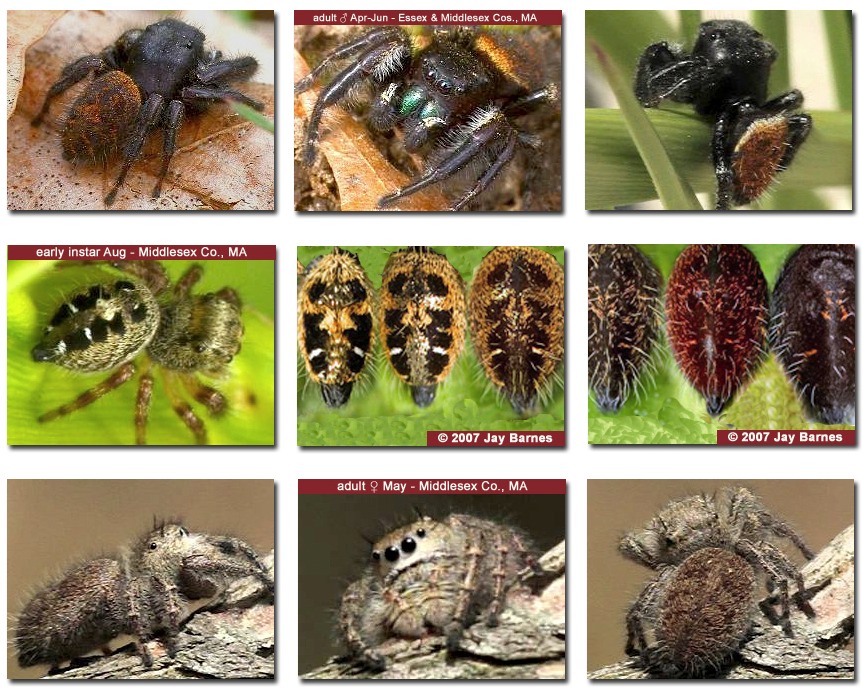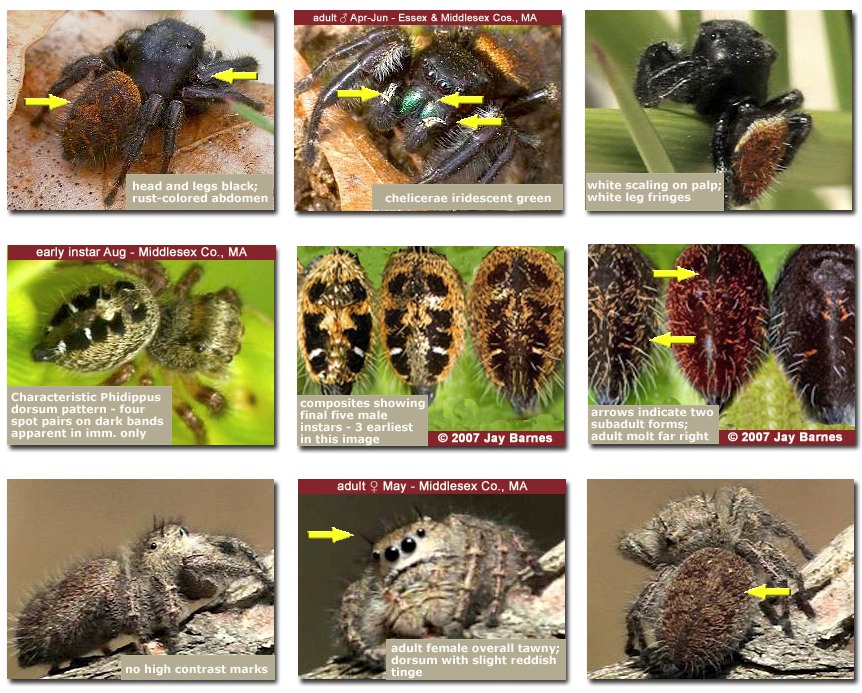Phidippus princeps (Peckham & Peckham, 1883)
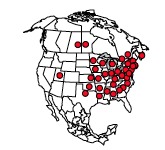
Richman, Cutler & Hill 2012
Birders familiar with the complexity of gull identification will be aware that some species have 6 or more “looks” (feather patterns) as they mature. Sight identification of jumping spiders presents similar challenges. In addition to being sexually dimorphic (adult males and females typically look quite different) salticids go through a series of molts before reaching their adult form. Each stage may be quite different in appearance from the previous one. Barnes’ composite image (see link below and ID Details images) showing 4 stages in the development of an individual Phidippus princeps illustrates an example of the outward changes as the spider matures. Most experts are wary of trying to identify the pre-adult stages of spiders and this seems a good lead for the naturalist to follow. However, with the knowledge of when a given species matures as well as information on regional variations, sight identification of most adult jumping spiders is possible.
Barnes, 2006
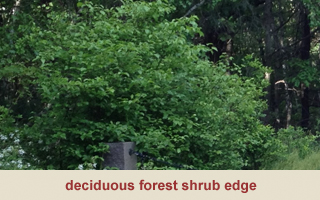
Massachusetts – First State / County Records
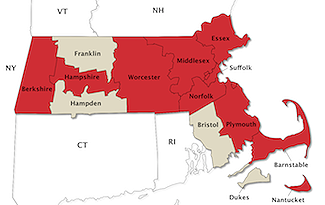
- ♦ *J. H. Emerton – Phidippus brunneus – Essex (Salem), Middlesex (Waltham) – Emerton, 1891: 226, pl. 16 f. 2
- ♦ J. H. Emerton – P. brunneus – Suffolk (Hyde Park), May 1903 – Emerton, 1909: 224, pl. 11 f. 1
- ♦ Various – P. p. – Barnstable, Berkshire, Nantucket, Norfolk, Plymouth, Worcester – Edwards, 2004: 69, f. C37-38, 221-226
- ♦ T. Murray – P. princeps – Hampshire (Amherst), October 2004 – BugGuide node 7779
-
♦ Connecticut – P. p. – Kaston, 1948: 485
Fairly common all over the State.
-
Edwards, G. B. 2004. Revision of the jumping spiders of the genus Phidippus (Araneae: Salticidae). Occasional Papers of the Florida State Collection of Arthropods 11: i-viii, 1-156, 350 figs.
*The second entry in Edwards (2004) synonomy is: A.(ttus) insolens Hentz 1845: 200; holotype (♂) destroyed
. While the source record here gives the location (Habitat) as North Carolina, Hentz’s Attus insolens was included a decade earlier (Hentz, 1935) in Hitchcock’s listing of Animals in Massachusetts
. However, a clarifying sentence preceding the list indicates Hentz may have actually found the spider elsewhere.
